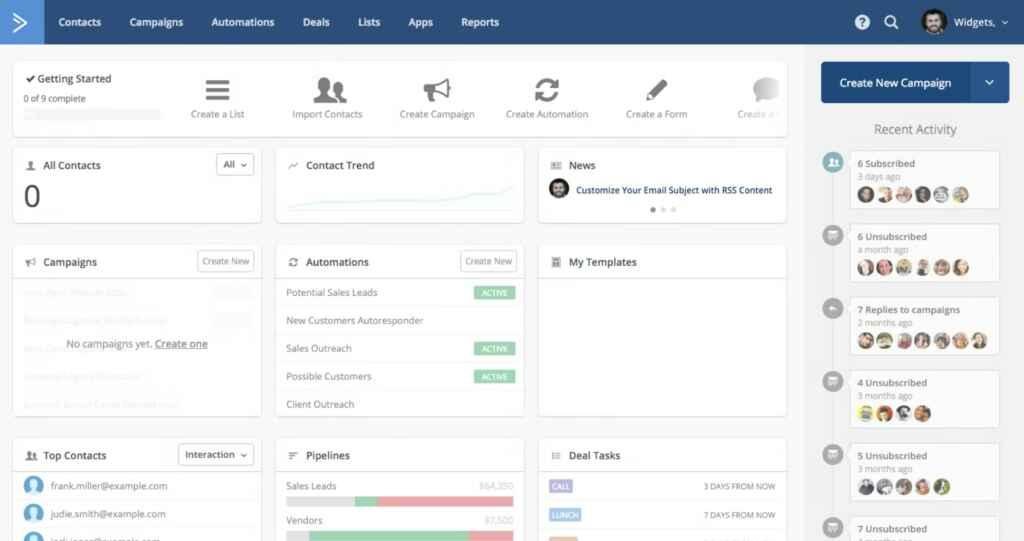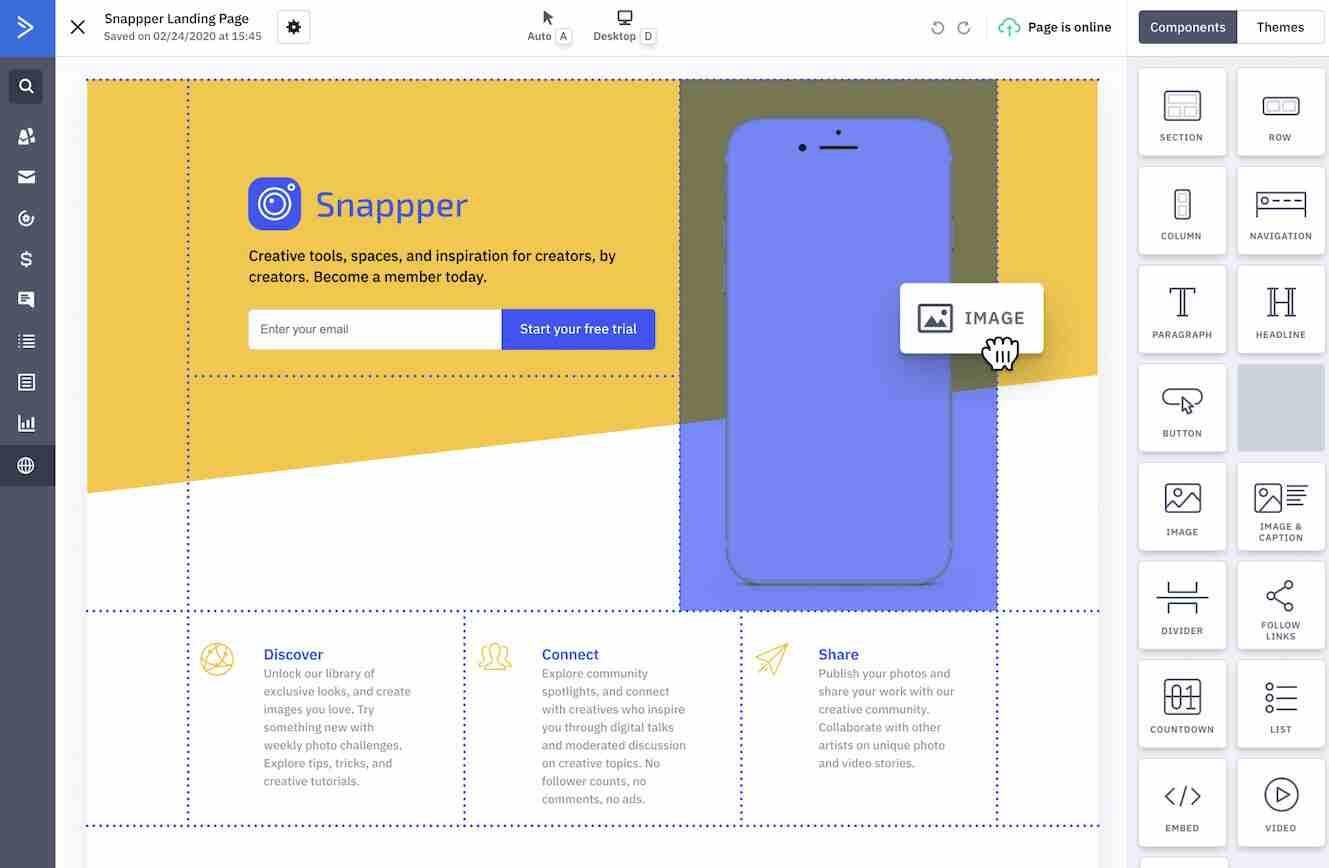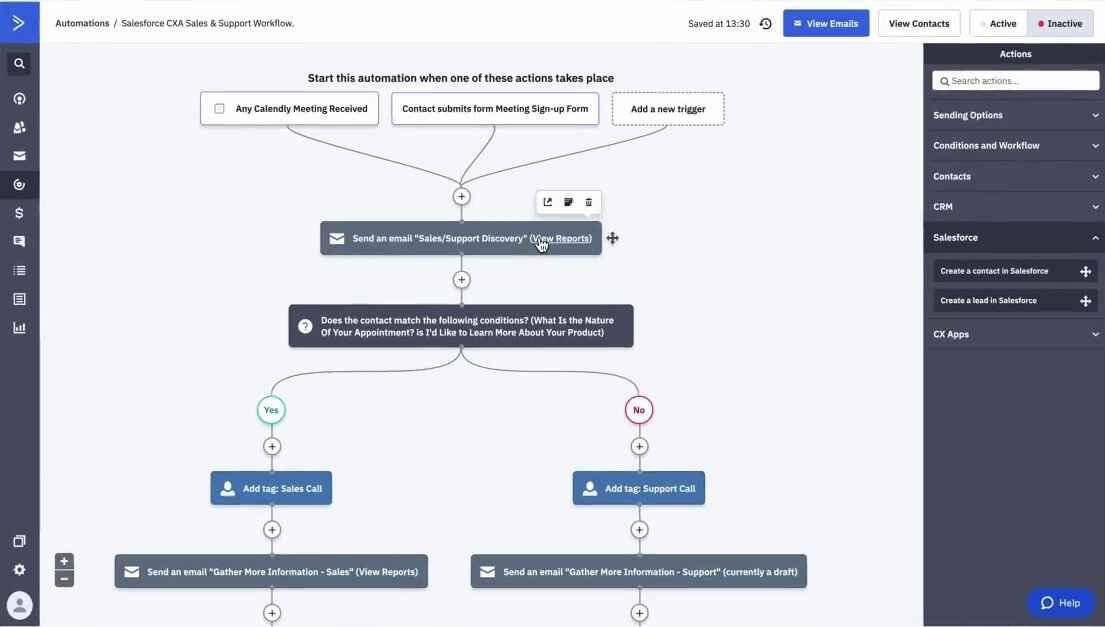ActiveCampaign is a powerful email marketing and automation tool. It promises to enhance your customer relationships and streamline your campaigns.
But is it the right fit according to your requirements? Whether you’re a small business owner or a marketing expert, understanding what ActiveCampaign has to offer could be important for your marketing efforts.
So, in this ActiveCampaign review, you’ll discover its key features, ease of use, and whether it can meet your business needs.
Disclaimer: If you buy any products through links on this site, I may earn a commission. But it doesn't make any difference to your cost, and it helps me keep this blog running. So you could always read my articles for free.
What is ActiveCampaign?
ActiveCampaign is a powerful marketing automation platform designed to help you build meaningful relationships with your customers. It lets you do that through email marketing, sales automation, and customer experience tools.

You might be a small business owner or part of a larger team. Regardless, ActiveCampaign gives you the tools to streamline communication and nurture leads effectively.
At its core, ActiveCampaign specializes in automating repetitive tasks while keeping your messaging personalized.
For instance, you can create an email series that automatically welcomes new subscribers, shares helpful content, and even offers discounts based on their interests.
ActiveCampaign comes with a drag-and-drop automation builder that makes setting up these workflows simple, even if you’re not tech-savvy.
It also integrates with CRM tools, allowing you to track customer interactions and tailor your approach.
For example, if a customer clicks on a specific product link in your email, the platform can automatically alert your sales team to follow up or send a targeted email with related recommendations.
With features like segmentation, A/B testing, and advanced reporting, you can continuously refine your strategies to boost engagement and conversions.
Next, in this ActiveCampaign review, let’s discuss its top capabilities.
ActiveCampaign key features
ActiveCampaign’s feature set is designed to help you streamline marketing, automate sales processes, and foster customer relationships. Here’s an overview of its capabilities:
Email marketing
ActiveCampaign excels at email marketing by enabling you to send targeted, engaging emails to your audience.
You can create professional emails using its drag-and-drop email editor, customize them with your branding, and include dynamic content tailored to each recipient.

For example, if you run an online store, you can send product recommendations based on a customer’s browsing history or purchase behavior.
Not just that. The platform also supports A/B testing, so you can experiment with subject lines, content, or designs to identify what resonates most with your audience.
Marketing automation
Automation is at the heart of ActiveCampaign review. The automation builder allows you to create workflows that guide your customers through personalized journeys.

Imagine a scenario where someone signs up for your newsletter. You can set up an automation that sends a welcome email, follows up with a product demo link, and later offers a discount.
The platform also supports advanced triggers. For example, if a contact abandons their cart, ActiveCampaign can send an email reminding them to complete the purchase. This proactive approach keeps your brand top of mind and drives conversions.
CRM and sales automation
ActiveCampaign’s CRM goes beyond simple contact management by automating your sales process. You can track leads, manage deals, and automate follow-ups directly within the platform.

For instance, when a lead fills out a form on your website, the system can automatically assign them to a salesperson, update their status in the pipeline, and schedule a task for the next follow-up.
This ensures that no lead slips through the cracks and that your team stays focused on high-priority tasks.
Segmentation and personalization
One-size-fits-all campaigns rarely succeed, and ActiveCampaign helps you avoid this pitfall with advanced segmentation tools, which are an important part of this ActiveCampaign review.

You can divide your audience into groups based on factors like location, interests, purchase history, or engagement levels.
For example, if you’re launching a new product, you can create a segment of contacts who have previously shown interest in similar products.
Then, craft a campaign that speaks directly to their interests, increasing the likelihood of engagement.
Personalization takes this a step further. You can insert dynamic content, such as the recipient’s name or specific product recommendations, into your emails. This makes your communication feel more genuine and relevant.
Landing pages and forms
ActiveCampaign includes tools for building landing pages and forms, making it easy to capture leads and drive conversions.
You can design eye-catching landing pages to promote events, offers, or downloads, complete with customizable forms to collect contact information.

For instance, if you’re hosting a webinar, you can create a landing page where attendees can sign up. Once they’ve registered, you can set up an automation to send reminders, follow-up emails, and even post-event surveys.
Integrations
ActiveCampaign integrates with over 900 apps, including popular tools like Shopify, WordPress, Slack, and Salesforce. This allows you to sync data seamlessly across platforms, creating a unified workflow.

For example, if you run an eCommerce business, you can connect ActiveCampaign to your Shopify store.
This integration lets you track customer behavior, such as purchase patterns, and use that data to create targeted email campaigns.
Reporting and analytics
To refine your strategies, you need data. And ActiveCampaign delivers it through detailed reporting and analytics. You can track email open rates, click-through rates, sales performance, and more.

For example, if you notice that a particular email campaign has a low open rate, you can use the insights to tweak your subject lines or delivery timing. This helps you continuously improve your campaigns for better results.
ActiveCampaign review: pros and cons
While it’s widely praised for its capabilities, ActiveCampaign may not be the perfect fit for everyone. Let’s dive into the pros and cons of ActiveCampaign, backed with specific examples, so you can decide if it’s the right tool for your business.
ActiveCampaign pros
Generous email sending limit
ActiveCampaign allows you to send a high volume of emails, even on its lower-tier plans. This is a boon for businesses with large audiences or those running frequent campaigns.
This feature really makes ActiveCampaign stand out when compared to competitors. Because many email marketing tools restrict email sends based on your plan or charge extra for higher volumes.
Split testing up to 5 emails at once
ActiveCampaign offers robust split-testing (A/B testing) capabilities, allowing you to test up to five variations of an email simultaneously.
This goes beyond basic subject line testing—you can experiment with different designs, call-to-action buttons, and even content styles to identify what resonates most with your audience.
For example, you might test five email versions for a product launch, each with slightly different headlines and images.
By analyzing which version drives the most clicks or purchases, you gain valuable insights to refine future campaigns. This multi-variant testing ensures you’re making data-backed decisions to maximize engagement and conversions.
SMS campaigns
ActiveCampaign extends its communication capabilities beyond email, allowing you to send SMS campaigns. This feature is especially useful for businesses looking to engage customers with time-sensitive offers or reminders.
For instance, if you’re running a flash sale, you can send an SMS alert to your subscribers with a discount code. SMS campaigns have higher open rates than email, making them a powerful tool to capture immediate attention.
You can also integrate SMS with your automations, such as sending appointment reminders or follow-up messages after a purchase.
The ability to combine SMS and email campaigns in a single platform helps you create cohesive, multi-channel marketing strategies without the need for third-party tools.
ActiveCampaign cons
Short free trial
ActiveCampaign offers only a 14-day free trial, which may not be enough time to fully explore its extensive features.
While this trial gives you access to most tools, tasks like setting up campaigns, testing automations, and analyzing results often take longer.
For example, if you’re new to marketing automation, you might spend a significant portion of the trial period learning the platform instead of using it to its full potential.
In contrast, competitors of ActiveCampaign usually offer free plans or longer trials, making it easier for users to test the waters.
Basic plan has limited integrations
ActiveCampaign’s Lite plan, while affordable, restricts access to many third-party integrations.
For instance, if you want to connect your CRM or eCommerce platform, you might find that certain integrations are only available on higher-tier plans.
This limitation can be a hurdle for small businesses that rely on multiple tools to manage their workflows. If you’re using platforms like Salesforce or Shopify, you may need to upgrade to a pricier plan to unlock seamless integrations.
Outdated email templates
While ActiveCampaign provides pre-designed email templates, many of them feel outdated and lack modern design elements.
This can be a drawback if you’re aiming to create visually striking emails that stand out in crowded inboxes.
For example, if you’re launching a sleek, tech-focused product, the available templates might not align with your brand’s aesthetic.
You can customize these templates, but this requires more time and effort compared to platforms with better design options like MailerLite or Brevo.
ActiveCampaign pricing
Another key part of an ActiveCampaign review is the pricing. ActiveCampaign offers a range of pricing plans designed to fit businesses of all sizes, from startups to large enterprises.
Here’s a breakdown of their plans, costs, and key features to help you make an informed decision.
Starter plan
The Lite plan starts at $15 per month for 1,000 contacts. This plan covers essential features like email marketing, unlimited email sending, marketing automation, and basic reporting.
It’s a great option if you’re just starting out and need a reliable tool to engage your audience. However, it lacks features like landing pages, standard segmentation, and in-depth reporting and analytics.
Plus plan
At $49 per month for 1,000 contacts, the Plus plan adds more value. You’ll get everything in the starter plan plus generative AI, landing pages, standard segmentation, and more.
Professional plan
The Professional plan, priced at $79 per month for 1,000 contacts, unlocks advanced features like automation, predictive sending, advanced segmentation, and conditional content.
If you want to create highly tailored campaigns that resonate with specific audience segments, this plan gives you the tools to do so.
Final thoughts
ActiveCampaign offers excellent features such as generous email sending limits, advanced split testing, and SMS campaigns, making it a robust choice for businesses seeking multi-channel engagement.
These tools, combined with powerful automations, enable you to deliver highly personalized experiences to your audience.
Did I miss anything in this ActiveCampaign review? Did you try ActiveCampaign? Do you have any questions or comments? Share your thoughts below in the comments section.





